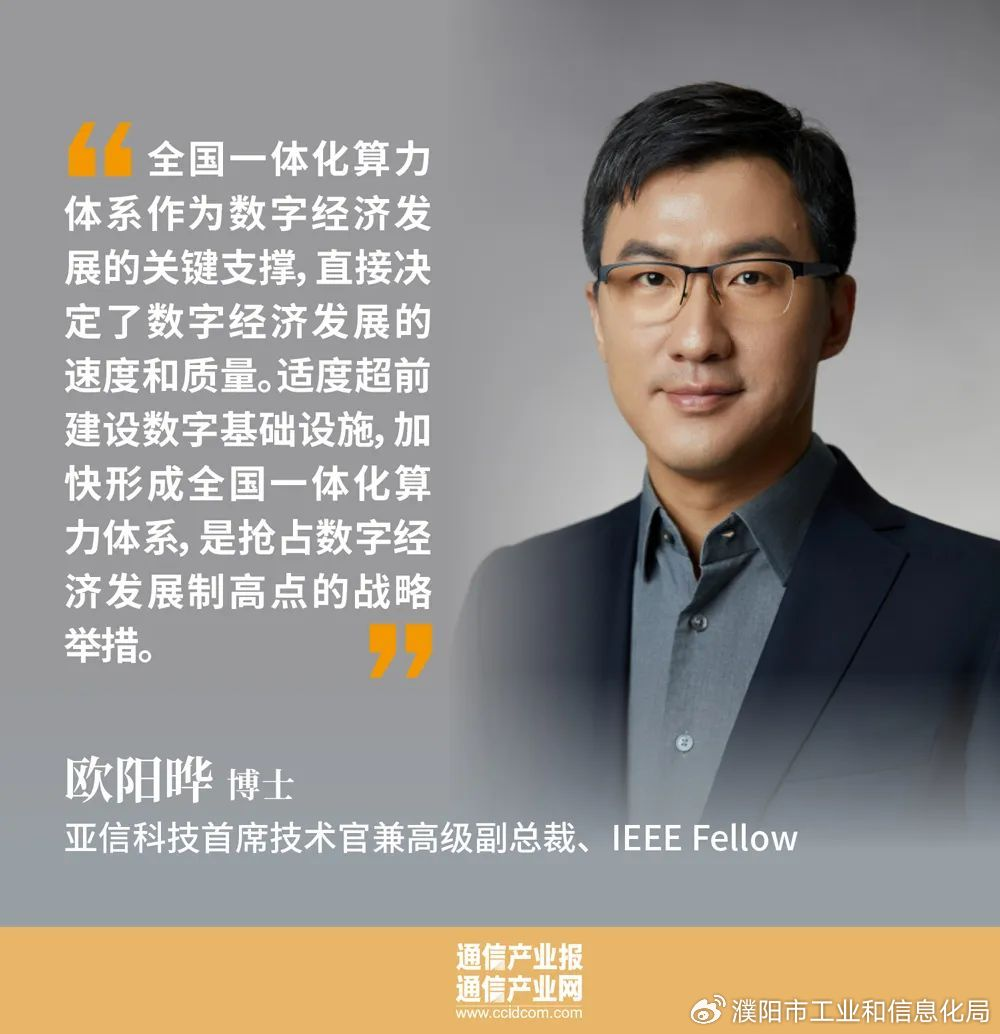The Government Work Report this year proposed to moderately advance the construction of digital infrastructure and accelerate the formation of a nationwide integrated computing power system. In the era of digital economy, computing power is a new productivity, and the computing power network is a digital infrastructure that facilitates large-scale scheduling and operation of various computing powers across the country. The construction of a nationwide integrated computing power network and the promotion of computing power infrastructure are key symbols of national modernization.
Given this, it is important to understand why the formation of a nationwide integrated computing power system needs to be accelerated. What are the existing problems? And where should the focus be in the next step of development?
Seizing the Commanding Heights of Digital Economy Development
A new round of technological revolution and industrial transformation is deepening globally, with digital technologies such as the internet, big data, cloud computing, artificial intelligence, and blockchain innovating actively. Data, as a key factor of production, is driving the digital economy towards comprehensive expansion. In this period, China has initially formed a number of internationally competitive digital industrial clusters.
To improve the governance system of the digital economy and enhance China's competitiveness and influence, we need to adopt a developmental perspective and address the issue of building digital infrastructure standing on a world-leading position. We must maintain a forward-looking and advanced approach, adhere to digital innovation to lead development capabilities, and enhance the level of intelligence.
“The nationwide integrated computing power system plays a significant role in the development of the digital economy,” said Dr. Ouyang Ye, CTO and senior vice president of AsiaInfo, and IEEE Fellow, in an interview with the all-media reporter of the Communications Weekly. He stated that opportunities and challenges always coexist, and currently, the development of China's digital economy has begun to face the challenge of the imbalance between the supply and demand of computing power resources.

On the one hand, from a national perspective, China's computing power resources have not yet achieved benefits of scale, but have focused on the self-sufficiency of digital industrialization. This has led to problems such as insufficient overall computing power resources, unbalanced regional distribution, and weak technological innovation capabilities in the process of industrial digitalization.
On the other hand, from the perspective of industry needs, the rapid development of the digital economy has led to a surge in demand for computing power across various industries. However, existing computing power resources are unable to meet this demand.
“Therefore, moderately advancing the construction of digital infrastructure and accelerating the formation of a nationwide integrated computing power system is a great strategy to seize the commanding heights of digital economy development,” said Dr. Ouyang Ye. By advancing the layout and improving the overall utilization rate of social computing power, people can effectively alleviate the contradiction between supply and demand of computing power resources, promote technology innovation driven by data intelligence, and provide strong support for the development of the digital economy. Furthermore, to facilitate the advancement of China's digital economy, it is essential to regulate the pace of development in the construction of digital infrastructure, with a focus on both economic and social benefits, ensuring a sustainable and high-quality development for the digital economy.
Accelerating the Construction of a Nationwide Integrated Computing Power System
It is a national strategy for the integrated allocation of computing power resources to channel more computing resources from the eastern areas to the less developed western regions, which has posed new demands on communication networks, key technologies, and computing power resources. Since 2022, significant breakthroughs have been achieved in the construction of the eight hub nodes and ten clusters under the initiative, laying the foundation for the development and initial scale of the nationwide integrated computing power system.
According to Dr. Ouyang Ye, the nationwide integrated computing power system is a system designed for the supply, scheduling, and application of computing power resources that focuses on computing power resources, builds on data centers, cloud computing, big data, and other foundations, and is supported by network connections.
To facilitate the establishment of the integrated computing power system, Dr. Ouyang Ye recommended focusing efforts in five key aspects: the integrated layout of general computing power, intelligent computing power, and super computing power; the integrated coordination of computing power in the eastern, central, and western regions; the integrated application of computing power with data and algorithms; the integrated integration of computing power with green electricity; and the integrated promotion of computing power development and safety guarantee. These efforts will drive the construction of a nationwide integrated computing power network that is interconnected, accessible, green, and secure.
Currently, the data flywheel effects based on the computing power network have yet to be fully formed, and the application value of the initiative has not been fully realized as the era of artificial intelligence approaches. Therefore, AsiaInfo proposes accelerating the construction of the nationwide integrated computing power system by focusing on industrial collaboration in the field of data networking and general artificial intelligence scenarios.
In response to the call of the country and leveraging AsiaInfo's leading role as the main force in the construction of the nationwide integrated computing power system, the company will focus its efforts on the following two aspects:
For one thing, we will focus on data networking, strengthen the integration of data and computing power, and promote the release of data value. To achieve this, we will first strengthen the coordinated development of data centers and networks, develop the core technologies of computing power networks, including integrated orchestration of computing power, network and industries, and intelligent scheduling of computing power. Second, we will facilitate the openness and sharing of data resources, establish trusted data spaces, and conduct in-depth research on technologies such as privacy computing to break through data islands and unlock the value of data. Third, we will cultivate the market for data elements, establish mechanisms for data exchange and circulation, and promote the efficient allocation of data elements for intelligent applications.
For another thing, we will promote the innovation and application of general artificial intelligence technology as a “new productivity.” First, we will strengthen basic research in general artificial intelligence, break through key technological bottlenecks such as generative AI big model, and enhance international competitiveness. Second, we will build a general open AI platform, adopting a “Model-as-a-Service (MaaS)” approach, to promote the implementation of the “AI+” initiative, empower various industries, and support the development of internationally competitive digital industrial clusters. Third, we will collaborate with universities to cultivate a talent pool for general artificial intelligence. This will promote AI-native technological innovation and application promotion.




